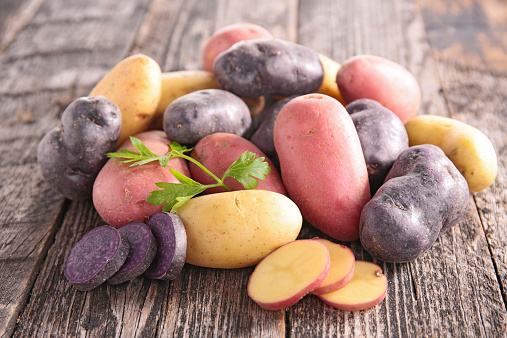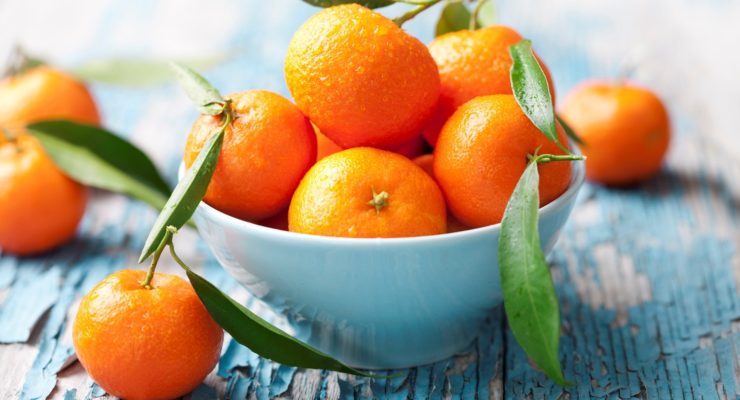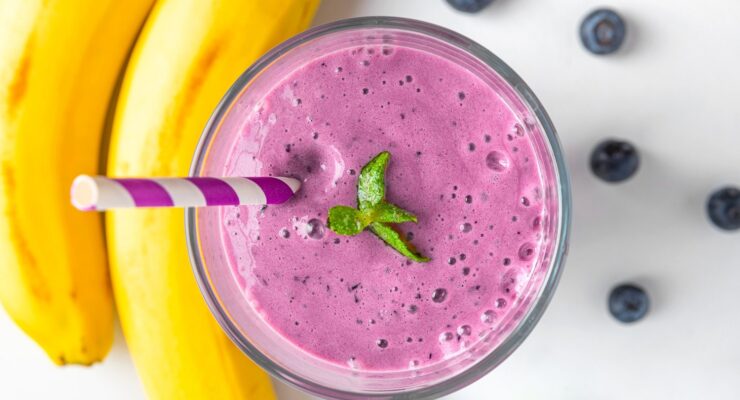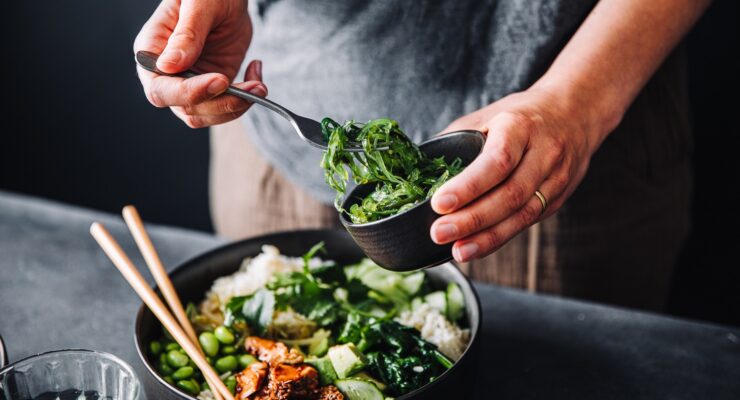The Showdown of the Spuds: Potatoes Explained
Article posted in: Diet & Nutrition
Potatoes are by far America’s most popular vegetable: Each of us eats, on average, more than 115 pounds per year—about twice the amount of the next most popular vegetable, tomatoes, according to the U.S. Department of Agriculture (USDA). On the other hand, we eat only about five pounds of sweet potatoes annually. The two types of tubers are not related, botanically speaking, but they have a lot in common on your plate. Both have about 100 calories, two grams of protein and 25 grams of carbohydrates per serving. But there are important differences between them and even among the varieties of each type. Here’s what you need to know to choose the right spuds for you:
POTATOES
Varieties: You’ll find up to seven different types of the familiar tuber sometimes called an “Irish” or “white” potato in the produce department at your supermarket. Russets, the largest types, have thick brown skin and fluffy, dry white flesh. Thinner-skinned white, red, yellow and purple varieties are starchier and moister. Fingerlings and petites are littler versions that are similar to the other colored types.
Nutrition: Though potatoes are often prepared and served with lots of added fat and sodium, they have none of their own. Potatoes are loaded with vitamin C—45 percent of the recommended daily allowance in a single spud. They’re also a rich source of potassium, the mineral your body relies on to regulate blood pressure and contract muscles. In fact, you get more potassium from a potato than a banana. Potatoes are SmartCarbs and a half cup per serving can be a healthful choice if you cook and eat them with little or no oils or butter.
Cooking: Russet potatoes work best for baking. For mashing, boiling or salads, go with the smaller, waxier types. Yukon Gold, with yellow skin and flesh, has a naturally buttery flavor. Fingerlings and petites become tender and creamy from roasting.
SWEET POTATOES
Varieties: You may have heard that sweet potatoes have white flesh and yams are orange inside. But true yams are scaly, rough roots commonly eaten by people in Africa and the Caribbean and are rarely available in the U.S. The term “yam” is used in marketing, but regardless of their color—which can range from as white as an Irish potato to deep-red or even purple—the tubers you see in stores are all different varieties of sweet potato.
Nutrition: Sweet potatoes are fat-free and give you more than 35 percent of the vitamin C you need each day. Orange-fleshed varieties provide you with four times your daily allowance of vitamin A. Even more valuable, sweet potatoes have a lower glycemic index than regular potatoes, so they leave you feeling full longer and don’t cause spikes in blood sugar that can lead to hunger. They also come with with anthocyanins, a nutrient that was linked to weight loss in a study of laboratory animals published in the journal Food Science and Biotechnology.
Cooking: Sweet potatoes with rosy colored skin and moist orange flesh, such as the widely available Covington variety, are best for baking and mashing. For roasting, go with Japanese sweet potatoes, which have red skin and dry, white flesh. Use copper-skinned, white fleshed sweet potatoes—which can look very similar to common potatoes—for soups and stews. Sweet potato fries are a popular offering in many restaurants these days. But even nutrient-rich sweet potatoes are not the healthiest choice when they’re fried in oil and laden with salt.









